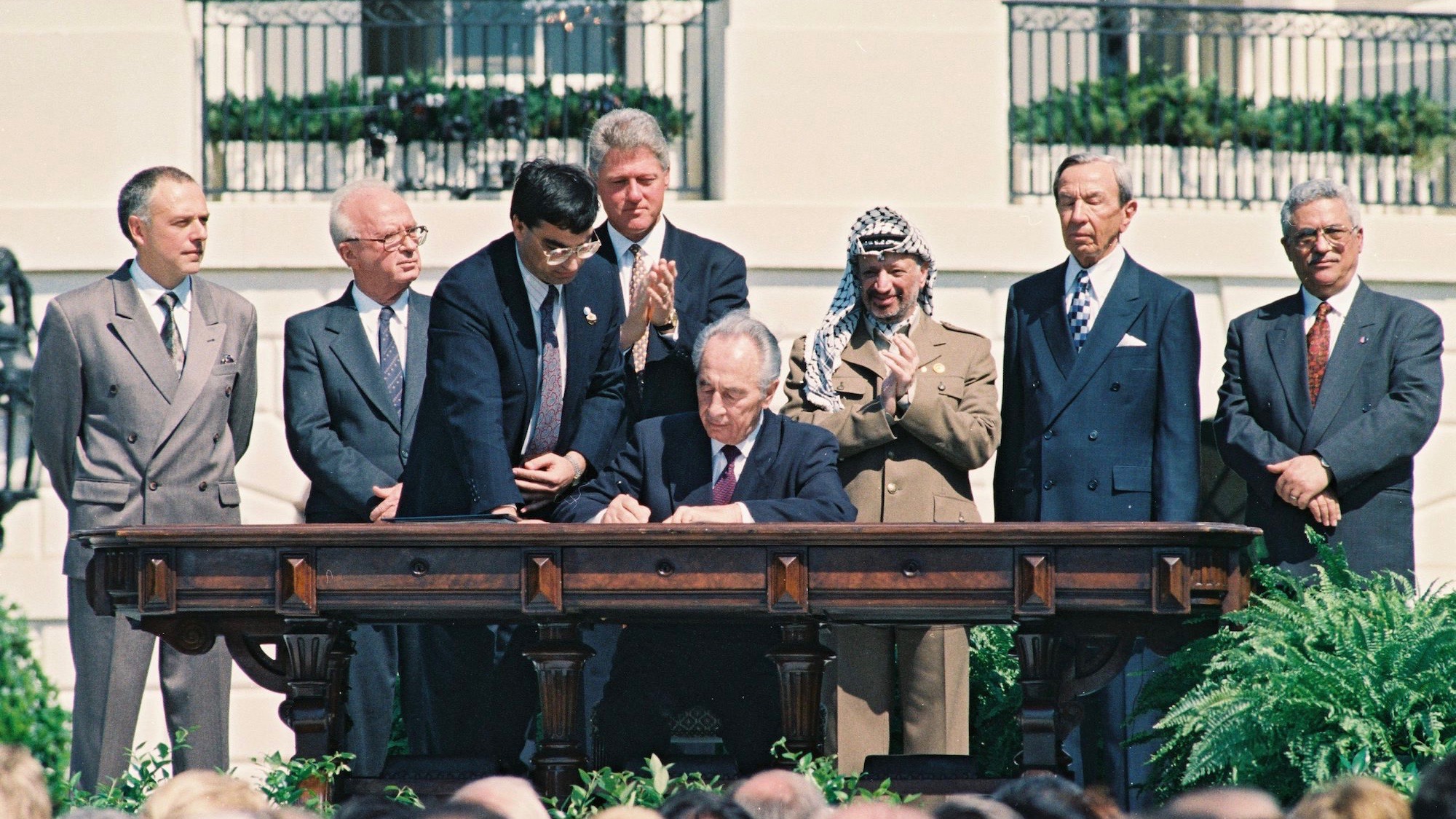This September marks the completion of three decades since the signing of the Oslo Accords. The agreement, which once generated hopes of an independent Palestinian state, is now considered dead due to aggressive undermining by Israel, which is instead intensifying its settler colonial project in the occupied Palestinian territories.
The Accords were signed by the Israeli government under Prime Minister Yitzhak Rabin and the Yasser Arafat-led Palestinian Liberation Organization (PLO) between 1993 and 1995 under the mediation of the US and others. After their signing, the PLO leadership, which had already renounced armed resistance, was allowed to return to the occupied territories from its exile in Tunis. The PLO was recognized as the sole representative of the Palestinian people.
The Oslo Accords marked the first occasion when Israel, since its 1967 occupation of the Palestinian territories of Gaza, West Bank, and East Jerusalem, officially acknowledged the Palestinian right to self-determination and agreed to a two-state solution.
When the accords were signed, the reception was largely positive except for resistance groups such as Hamas. However, over the years, it gradually become clear that Israel never really wanted to see an independent Palestinian state. In the following years, successive Israeli governments consistently sought to delegitimize the Palestinian movement and resistance, and deliberately sabotaged attempts to reach a final settlement as envisaged in the Accords. Israel’s main backer, the US, was complicit in this even while paying lip service to the Accords.
The cost of compromise
The agreement divided the occupied West Bank into three areas—Area A, B, and C. Area A, predominantly Palestinian, was left to be governed by a new entity called the Palestinian Authority (PA), based in Ramallah. Area B was to be jointly governed by the PA and Israel, and Area C, around 60% of all the occupied West Bank, was left completely under Israeli control until the final settlement.
In effect, the PLO agreed to create the future state of Palestine on just 22% of the territory of historic Palestine, half of what was assigned to the Palestinian state under the UN partition plan of 1947.
The PA was to administer the Palestinian areas for some years until final agreements were reached on four issues—settlements, the status of East Jerusalem, the exact borders, and the status of Palestinian refugees and their right to return.
Hannan Ashrawi, a former member of the PLO executive committee, points out that perhaps the only major positive outcome of the Oslo Accords was the return of the PLO leadership to the occupied territories, but even this was used by Israel to deprive Palestinians of any bargaining space in the future.
From occupation to apartheid
The assassination of Rabin in 1995 and the rise of the far right-wing in Israeli politics, as represented by Ariel Sharon who provoked the second intifada by visiting the Al-Aqsa mosque compound, set the stage for prolonged occupation through a systematic dismantling of the Oslo Accords.
While continuing its attacks, Israel kept citing Palestinian resistance to claim that the latter were not interested in peace and thus refused to conduct negotiations or address the core issue of occupation. There have been no talks between Palestinians and Israelis since 2014, and Israel continues to refuse to take part in talks.
Successive Israeli governments implemented a series of oppressive measures such as checkpoints, apartheid walls, settlers-only roads, forced displacement, settler violence, and raids on Palestinians. They also permitted the large-scale building of illegal settlements and protected the illegal Jewish settlers who regularly raid the Al-Aqsa and the Palestinian localities, often indulging in violence.
The number of illegal settlers in the occupied territories of West Bank and East Jerusalem has increased from around 110,000 in 1993-94 to over 700,000 today.
Thousands of Palestinians have been killed in successive airstrikes in Gaza and in raids and extrajudicial killings carried out in the West Bank and East Jerusalem. Thousands more have been incarcerated by the Israeli state.
Ashrawi claims that “the whole of Oslo…is more honored by the breach than the compliance. Israel picks and chooses what it likes from Oslo…Oslo was a very convenient tool for the Israelis to take more land, get more time, create more realities.”
It seems that Oslo gave the Israelis the opportunity to do whatever they wanted and “the Americans and Europeans never held Israel to account,” she asserts.
Israeli policies towards Palestinians are being increasingly called out by a number of human rights groups, including by a UN expert, as apartheid. There are two systems in the occupied territories governing the Palestinians and the Israeli settlers separately.
The PA is also gradually losing its legitimacy among Palestinians because of its structural constraints, lack of funds, and failure to carry out their aspirations of liberation, as well as allegations of collaborating with the occupation..
It is no wonder that the young generation in Palestine thinks that Oslo was a mistake which legitimized the Israeli occupation in exchange for nothing. An increasing number of them question the PA’s continued adherence to the Accords. There has also been a new wave of resistance in the occupied territories.





